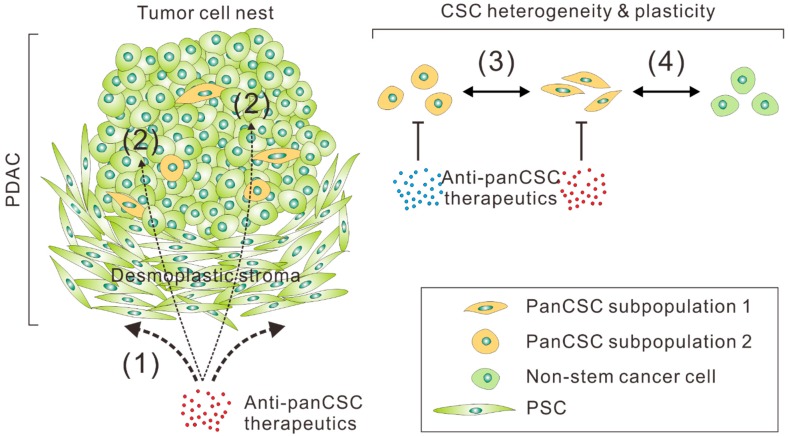Figure 1.
Potential hurdles in pancreatic cancer stem cells (panCSC)-targeted therapy. Due to the desmoplastic reaction of the stroma of pancreatic ductal adenocarcinoma (PDAC) engendered by pancreatic stellate cells (PSCs), which impedes drug penetration, only a small proportion of the anti-panCSC therapeutics can reach their target tumor cells to exert their anticipated effects (1). Even when the therapeutics successfully penetrate the desmoplastic stroma, most of them will reach non-stem cancer cells, which comprise the majority of the cancer cells, rather than the small subpopulation of panCSCs (2). Since panCSCs are highly heterogeneous and comprise partially interconvertible subpopulations, the therapeutics designed to target a specific subpopulation of panCSCs might not be able to inhibit or eradicate other subpopulations of panCSCs (3). Even if all the panCSCs are eradicated by the therapeutics, non-stem cancer cells may be stimulated to transdifferentiate into new pools of panCSCs following the therapy (4), and therefore the tumor regains its cellular heterogeneity and resumes its growth and aggressiveness.

